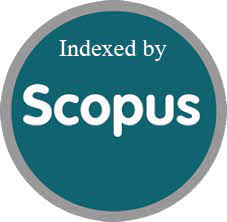Analyzing medical images to detect adverse drug reactions and toxicity
DOI:
https://doi.org/10.52783/jns.v14.1571Keywords:
Pharmacovigilance, ADR, General structure, PVAbstract
It is believed that sentiment analysis is the pinnacle of natural language processing. It can be difficult to analyze and comprehend customer reviews and comments. These days, social media sites like Facebook and Twitter allow users to share their thoughts about a product or movie. Online health community platforms like Daily Strength, Me Help, Patients Like Me, and others also offer health-related conversations. Serious negative effects on human bodies brought on by careless medication use without a prescription are known as adverse drug reactions, or ADRs. In the field of pharmacovigilance, the difficult research problem of automatically detecting adverse drug reactions (ADRs) from social media information has drawn a lot of attention. ADR can benefit from the vast amount of data discussion on social media. Therefore, to address the casual vocabulary and misspellings prevalent in social media, effective machine learning approaches are required. Creating deep learning models to identify and enhance ADR performance is the aim of this study. Numerous approaches and algorithms have been put forth to identify adverse medication reactions. To detect ADR, this research study suggests a more accurate and efficient framework called the "Adverse Drug Effect Aware Recommendation System." This study focuses on reviews of a specific drug reaction that were gathered from Twitter.
Downloads
Metrics
References
Zhang L, Sheng Y, Yang J, Hu Z, Peng B. Predicting the toxic side effects of drug interactions using chemical structures and protein sequences. Scientific Reports. 2024 Dec 28;14(1):31503.
Wang DY, Salem JE, Cohen JV, Chandra S, Menzer C, Ye F, Zhao S, Das S, Beckermann KE, Ha L, Rathmell WK. Fatal toxic effects associated with immune checkpoint inhibitors: a systematic review and meta-analysis. JAMA oncology. 2018 Dec 1;4(12):1721-8.
Mishra N, Haval AM, Mishra A, Dash SS. Automobile maintenance prediction using integrated deep learning and geographical information system. Indian Journal of Information Sources and Services. 2024;14(2):109-114. https://doi.org/10.51983/ijiss-2024.14.2.16
Alexander CR. Artificial Intelligence in early detection of Adverse Drug Reaction for Anti-psychotic drugs. Journal of Student Research. 2023 Nov 30;12(4).
Wang Y, Xiao M, Miao Y, Liu W, Huang Q. Signature Scheme from Trapdoor Functions. J. Internet Serv. Inf. Secur.. 2019 May;9(2):31-41.
Priyadarshini BI. Deep Learning for Predictive Toxicology Assessment Early Detection of Adverse Drug Reactions. Power System Technology. 2024 Apr 26;48(1):680-97.
Pieters W. Representing humans in system security models: An actor-network approach. J. Wirel. Mob. Networks Ubiquitous Comput. Dependable Appl.. 2011 Mar;2(1):75-92.
Bartosik A, Whittingham H. Evaluating safety and toxicity. InThe era of artificial intelligence, machine learning, and data science in the pharmaceutical industry 2021 Jan 1 (pp. 119-137). Academic Press.
Devi R, Priya L. The Mechanism of Drug–Drug Interactions: A Systematic Review. Clinical Journal for Medicine, Health and Pharmacy. 2024 Sep 30;2(3):32-41.
Kim HR, Sung M, Park JA, Jeong K, Kim HH, Lee S, Park YR. Analyzing adverse drug reaction using statistical and machine learning methods: A systematic review. Medicine. 2022 Jun 24;101(25):e29387.
Baggyalakshmi N, Anubarathi M, Revathi R. Pharmacy management system. International Academic Journal of Innovative Research. 2023;10(2):36-55. https://doi.org/10.9756/IAJIR/V10I2/IAJIR1008
Chang HH, Chiang SY, Chen PC, Tsai CH, Yang RC, Tsai CL, Wu TH, Hsieh YW, Lin YC, Kuo YT, Chen KC. A system for reporting and evaluating adverse drug reactions of herbal medicine in Taiwan from 1998 to 2016. Scientific Reports. 2021 Nov 2;11(1):21476.
Ho TB, Le L, Thai DT, Taewijit S. Data-driven approach to detect and predict adverse drug reactions. Current pharmaceutical design. 2016 Jun 1;22(23):3498-526.
Riahi Asl M, Naderi H. Filter spamming in computer networks by text mining and machine learning method. International Academic Journal of Science and Engineering. 2016;3(2):146-160.
Das P, Mazumder DH. MLCNN‐COV: A multilabel convolutional neural network‐based framework to identify negative COVID medicine responses from the chemical three‐dimensional conformer. ETRI Journal. 2024 Apr;46(2):290-306.
Dara ON, Ibrahim AA, Mohammed TA. Advancing medical imaging: detecting polypharmacy and adverse drug effects with Graph Convolutional Networks (GCN). BMC Medical Imaging. 2024 Jul 15;24(1):174.
Downloads
Published
How to Cite
Issue
Section
License

This work is licensed under a Creative Commons Attribution 4.0 International License.
You are free to:
- Share — copy and redistribute the material in any medium or format
- Adapt — remix, transform, and build upon the material for any purpose, even commercially.
Terms:
- Attribution — You must give appropriate credit, provide a link to the license, and indicate if changes were made. You may do so in any reasonable manner, but not in any way that suggests the licensor endorses you or your use.
- No additional restrictions — You may not apply legal terms or technological measures that legally restrict others from doing anything the license permits.










